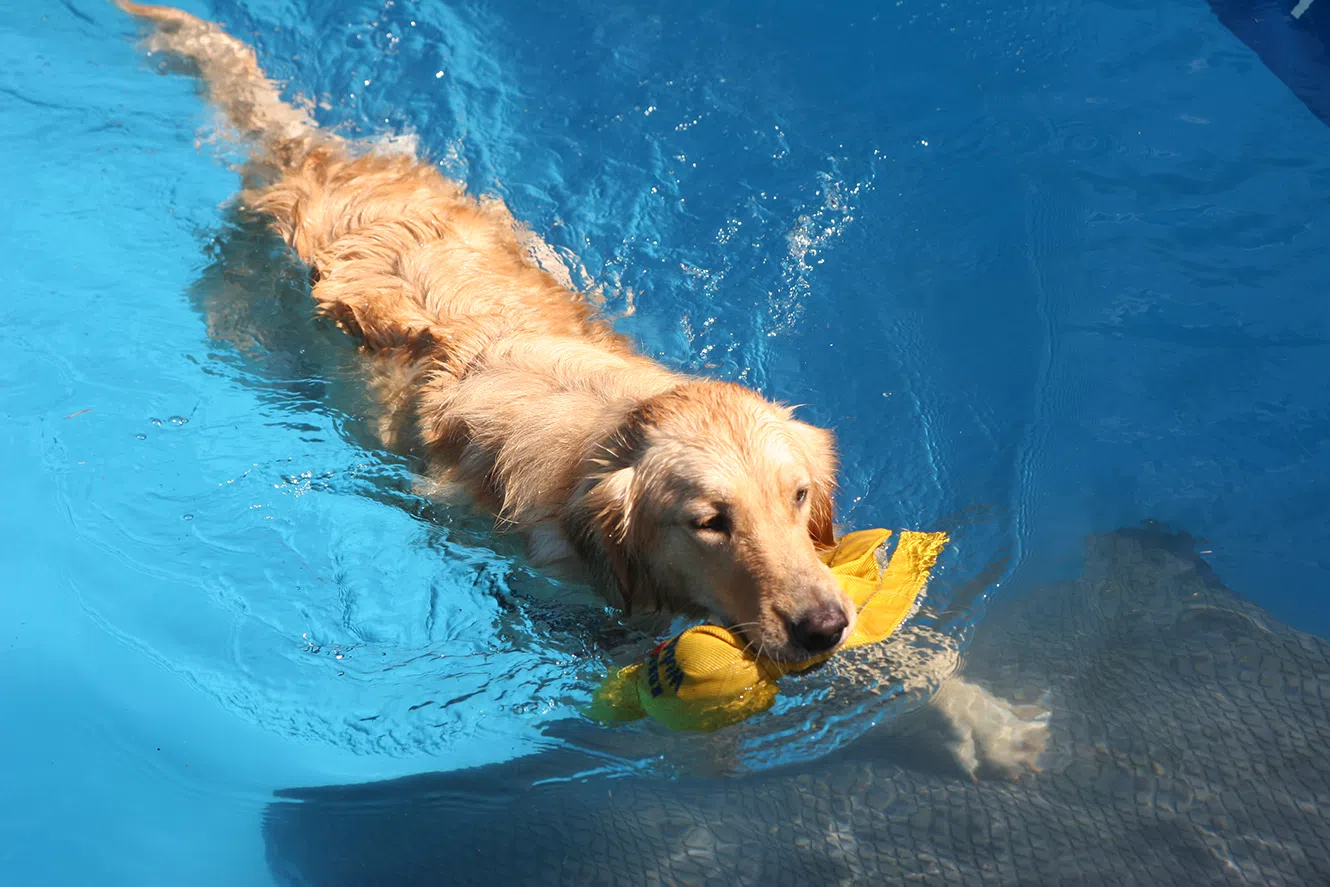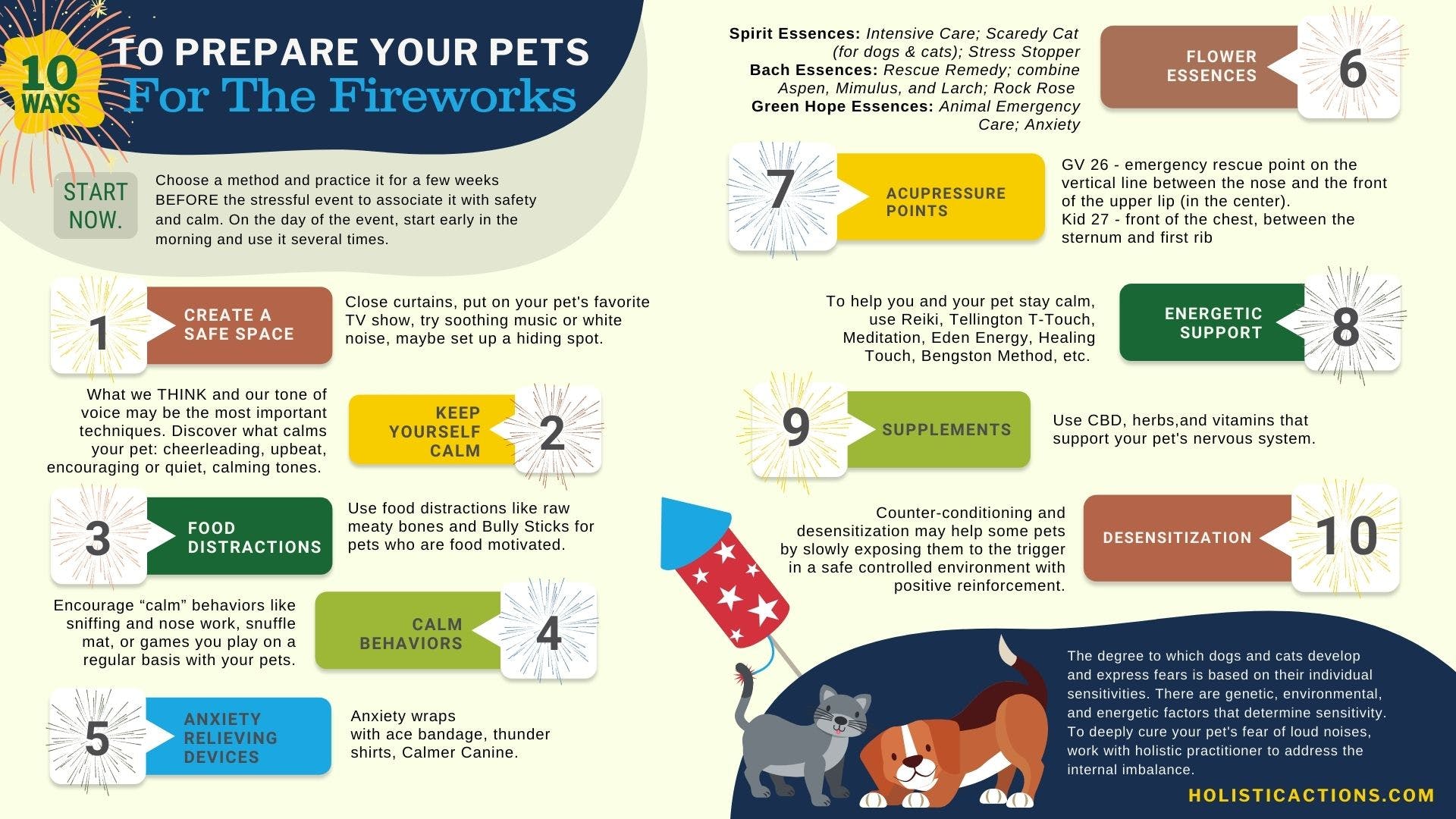American College of Veterinary Behaviorists Issues Statement on Adversive Training Methods

Done with Dog Daddy

By Coco Lederhouse October 16, 2023
Outfitted in a flashy Gucci tracksuit and sunglasses, and often seen walking beside his German Shepherds, Augusto DeOliveira, also known as “The Dog Daddy,” certainly commands attention.
Augusto DeOliveira “The Dog Daddy”, has gone viral on social media for his ability to control dogs. However, numerous behavioral science organizations, including the American College of Veterinary Behaviorists (ACVB), are warning owners that aversive training methods can be dangerous.
His dog training practices have caught the attention of concerned animal welfare groups, trainers, veterinary behaviorists, and pet owners. On September 13, the American College of Veterinary Behaviorists (ACVB) issued a statement expressing serious concerns regarding DeOliveira’s training practices and warning of the damaging effects that his methods could have on dogs.
“The training methods we see in the videos are using physical force or correction,” said Dr. Kelly Ballantyne, president of the ACVB and medical director at Insight Animal Behavior Services in Chicago. “We know that those methods are a big threat to animal welfare, they have a high risk of causing or increasing fear, panic, and aggression. They also put the handler and any of those people nearby at high risk for a bite.”
Instead, Dr. Ballantyne advocates for teaching animals through the reinforcement of desired behaviors and managing their environment to prevent undesired behaviors.
While aversive techniques may appear to stop a “bad” behavior, she explained that the effectiveness of the intervention isn’t determined by what happens in the moment, but if the behavior is changed over time. The American Veterinary Society of Animal Behavior issued a position statement in 2021 on humane dog training that advises against aversive training methods.
Video clips on social media are just a snapshot in time, and it’s “pretty easy to get swayed by the quick fix,” Dr. Ballantyne said.
Zak George, an evidence-based dog trainer and educational content creator, has been a strong opponent of DeOliveira’s training approach. George has organized peaceful protests at DeOliveira’s appearances around the U.S. and worked to raise awareness among pet owners.
“Our collective aim is to illuminate the dangers and inefficacies of inhumane training techniques,” George said. These techniques create an atmosphere of mistrust between dogs and their owners, and are associated with increased behavioral issues and aggression, he explained.
Several other organizations, including the Animal Behaviour and Training Council and the Royal Society for the Prevention of Cruelty to Animals raised concerns about DeOliveira’s group training sessions in London earlier this summer.
Similarly, the Association of Professional Dog Trainers and the Pet Professional Guild Australia issued a statement in response to DeOliveira’s training techniques.
Both George and Dr. Ballantyne warned of trainers who use outdated language like “dominance” or “alpha.” Dominance theory, based on the perceived dynamics of a wolfpack, has been debunked even in wolves, Dr. Ballantyne explained. Using those terms to explain a dog’s actions is not supported by current scientific consensus on dog behavior.
“The issue we’re confronting in the dog training community isn’t confined to any one individual like Augusto DeOliveira,” George said. “His practices, unfortunately, aren’t outliers; they’re part of a troubling pattern prevalent among a significant number of trainers employing antiquated and harmful methods.”
In the current “buyer beware” environment, accountability is a challenge, George said. Many owners aren’t equipped to identify harmful practices, he added, “[They are] often misled by trainers who have mastered the art of pseudoscientific rhetoric. That’s why it’s imperative to rely on trainers who employ evidence-based, force-free methods—endorsed universally by reputable behavioral science organizations.”
Veterinarians play a key role in helping to guide clients towards trainers who use appropriate methods and are knowledgeable about dog behavior. The American College of Veterinary Behaviorists has information about choosing a dog trainer, U.S. dog training organizations with certification options, and a list of animal behavior profession.
© 2023 American Veterinary Medical Association All rights reserved
View this email in your browser What to REALLY Know About Chocolate Toxicity for Your PetThe Halloween season can be a great time to enrich your pet with walks and playtime in the falling leaves, bonding with your pet with the increased indoor time, and more. What to REALLY Know About Chocolate Toxicity for Your PetThe Halloween season can be a great time to enrich your pet with walks and playtime in the falling leaves, bonding with your pet with the increased indoor time, and more. At the same time it can be spooky for more reasons than that horror movie your partner is always trying to get you to watch! Pet owners often misunderstand the real dangers that chocolate can pose to their pet. Here are the REAL things you need to know: White chocolate poses no danger (think of a Zero bar). Milk chocolate (Hershey’s), which most Halloween candy consists of, poses a very minor risk. Dark chocolate (baker’s chocolate for example) poses a modest risk. For milk chocolate, a pet has to consume about 3 ounces of milk chocolate per 10 pounds of body weight before even a veterinarian would notice any troubling signs such as excitement (comes from theobromine in chocolate which acts like caffeine). It takes a massive amount of chocolate to be fatal. So to round out with an example, an average 20-pound dog would have to consume two full-sized candy bars (think Snicker’s bars) to even show any clinical signs. A 70-pound Labrador Retriever would have to consume 14 Butterfingers. If your dog eats a piece of chocolate, don’t worry about it, and certainly save yourself a trip to the emergency vet! The worst thing that will happen to your dog is probably digestive upset. However, if your dog is a non-stop eating machine and somehow got into a treasure trove of treats, please seek your veterinarian for treatment. I hope you all have a wonderful Halloween season and I’ll see you in November! Wags, Dr. Marty Becker Want more from Dr. Becker? Read more…Join his Facebook Group! |
Angel Fund Helps Shed Light On Vishnu’s Heart Problem

When Leticia Shaw’s cat, Vishnu, had a urinary blockage that required surgery about three years ago, the veterinarian told her that the condition sometimes can come back.
“Ever since then, I’ve been really anxious about that,” Leticia said. She has gotten regular checkups for Vishnu to make sure that doesn’t happen again.
During one of those checkups this spring at Little Tokyo Pet Clinic, Dr. Mary Chung told Leticia that Vishnu had a heart murmur. She recommended testing and x-rays to determine how severe the problem might be.
“That’s when Dr. Chung informed me about Angel Fund,” Leticia said. “I applied for a grant. The entire staff helped me with that process. Thankfully it was approved right away. I thought it would take way longer than it did.”
The tests showed that Vishnu has a cardiac problem. “They were able to do all the cardiovascular checks. But, basically, they just mentioned to me that he does have the problem – and once he has it, there’s no going back,” Leticia said.
“Thankfully, it doesn’t seem like it’s too serious. They caught it pretty early and they have given me heart medications and instructions on how to keep an eye on him to make sure it doesn’t get worse.
“There are warning signs like he might stop eating or when he sleeps his heart might beat too fast. So they gave me a couple of things to check. But honestly, he’s been amazing. He’s been super normal – he plays, he’s still himself. So hopefully it’s something that won’t get serious and we can just keep it contained.”
Leticia is grateful that she knows about the issue. And, she said, “thank God, things are going pretty good. I’m not seeing any signs for concern.”
She also expressed her gratitude for the Angel Fund grant and what it did to give her peace of mind and to help pay the veterinary bill.
Vishnu is seven years old and Leticia is optimistic that he has many years ahead of him. “He’s just so carefree and I hope he lives to 20. I can’t see him having any other problems. He’s now on a veterinary-prescribed diet and he can’t eat anything else.” But, she said, “the really scary problem for me was the urinary blockage.”
Leticia works as an IT manager for the Downtown LA Proper Hotel.otel.H Besides Vishnu, she has three dogs. She and her animals live in North Hollywood.
ULTIMATE DOG PACKING LIST — WHAT TO PACK FOR YOUR PET
From Eaglecreek.com
Packing for any trip involves planning for the adventures you expect to have. That can be challenging enough when it’s just you, but if you decide to bring your dog, it becomes even more complicated. Dogs need more than just food, water, and treats to have a fun and safe trip. Here’s what to pack for your dog on vacation, no matter the adventures you have planned.
How We Help

Angel Fund Grant Helps ‘Lucky Dog’ Get Surgery

Cheri Hanshaw, a fourth-grade teacher in Lancaster, owns a Shar Pei mix that she calls her lucky dog. “Star is my lucky dog because she gets everything to happen to her,” she said.
The last couple of years, she said, Star has had veterinary bills of about $10,000, include more than $3,000 a year ago when she was hospitalized with pancreatitis. The dog also has allergy problems. “We’ve had one thing after another with her,” Cheri said. “She’s usually at the vet’s every month.”
The latest iteration of her dog’s all too familiar relationship with veterinary medicine was recent surgery for a TPLO plate reaction, something that doesn’t happen often. Cheri did some research, which showed that it only occurs to about one in 50 dogs.
“Basically she had an infection from the plate in her knee and ite had to be removed,” Cheri said. “This is her second knee [to undergo TPLO surgery]. The left knee was fine and there was no problem after it was done a couple of years ago. And we had surgery in November for the right knee. It seemed fine and then after a few months, all of a sudden her leg started swelling up.”
Star, who is eight years old, is a patient of North Valley Veterinary Clinic in Lancaster. Dr. Eric Wright, who had done the TPLO surgery, told Cheri that the site infection could be treated with antibiotics but that it would continue to come back. “He recommended taking the plate out surgically so we don’t have to continue with these problems and spend all this money and then have to take it out surgically anyway,” she said.
Dr. John Chang, who assisted with the plate removal, told Cheri that he could see where an infection pocket was attached to a bolt on the plate.
The latest surgery took place in March. Because of Star’s history of medical problems, Cheri sought help from Angel Fund to help pay for the surgery. Dr. Misty Hirschbein, who sees Star for most of her appointments, told Cheri about Angel Fund and helped her apply. A grant of $1,000 was approved.
Cheri expressed gratitude to both Angel Fund and the North Valley Clinic, which matched the grant. But she also had to take out a loan to pay what she still owed. “I’m so in debt for this dog!” she said.
Star was still healing a month after the procedure, she said. “We had expected it would be healed by now,” Cheri said. “But the infection is almost gone.
“Star, the poor thing, has been living in a playpen since October. She has not been able to go outside to be a dog. She waits for us to come get her. So when I’m doing my school work, I’ll pull her out so she’s closer to me and not so isolated. I’m hoping she’ll be able to go back outside in a couple of weeks.”
Cheri lives with her daughter Kayla, who is a community college student. Her son, Zachary, She has a lives independently.
She previously had borrowed from her mother and taken out a loan from her credit union to help pay for her dog’s care. But Cheri is hoping things will change.
“I’m looking forward to being able to take Star on hikes again and to do the things that we used to do, like going to the beach. She’s almost there.”
If you would like to donate to the Animal Health Foundation to help more dogs like Star CLICK HERE or scan this QR Code

How to Be a Better Owner for a Pet Rabbit

Improve pet rabbit welfare in the home and vet clinic with simple techniques.
Updated July 7, 2023 | Source: Dr. Lori Gaskins for Psychology Today; Reviewed by Gary Drevitch

Source: Photo by Satyabratasm on Unsplash
by Lori Gaskins, DVM, DACVB, DACAW
Research regarding rabbit welfare and behavior indicates that there are many things that general practitioners and pet rabbit owners can do to improve the welfare of pet rabbits.
Veterinarians can play an active role in improving rabbit welfare during veterinary visits by using and recommending stress-reducing techniques. Some of these techniques include recommending owners bring a bonded companion to the exam; using aromatherapy; handling in a stress-free fashion; and offering treats and hiding places.
Veterinarians can also help prevent behavioral complaints of owners such as aggression, destruction, and house soiling. The majority of rabbits are fearful when lifted and handled, which can result in aggression to owners. Providing advice on reading the communication signals of rabbits and not handling them in ways that induce fear will decrease the risk of injuries to both the pet and the owner, and improve the human-animal bond. Other examples of responsible advice include housing the rabbit in a large and complex environment, getting rid of the food bowl and allowing the rabbit to forage for food, providing water in a bowl and not a water bottle, providing an appropriate litterbox, and always providing a companion and a hiding place. If veterinarians educate owners regarding their rabbits’ innate behaviors and emotions, this will increase the likelihood that each owner will provide a more welfare-friendly home for their pet.
How Rabbit Owners Can Improve Their Pets’ Welfare
Pet rabbit owners can improve their pet’s welfare in the home by providing their rabbit with companionship, foraging opportunities, hiding places, perches, digging boxes, positive reinforcement training, proper litterboxes, and a large enough enclosure to provide all of these things. Additionally, since the majority of rabbits are fearful when lifted and handled, these practices should be discontinued. An alternate method of moving the rabbit around is to train the rabbit to target an object, such as a finger or a stick with a ball on the end. The pet should be trained with positive reinforcement to place his nose on the target. This is done by luring the rabbit to the target with his favorite treat, then giving the treat if he sniffs or touches the target. Once the rabbit is trained to move to wherever the target is in order to touch it, the target can be placed wherever the owner wants the rabbit to go. This allows for fun interactions that can replace those that include picking the rabbit up and cuddling him.
Pet rabbit owners should work to decrease the stress of traveling, whether it’s for boarding or veterinary visits. The target training will help here, as the owner can place the target in a crate to get the rabbit crated for travel. Travel stress can also be decreased by always allowing bonded rabbits to travel together, using non-slip flooring in the crate, covering the crate with a towel, using aromatherapy such as lavender or valerian or blended essential oils, and providing favorite treats in the crate.
The 5 Domains of Welfare and the Pet Rabbit
Improving rabbit welfare can be accomplished using the framework of the 5 Domains of Welfare.
- Health: Provide timely veterinary visits to ensure the rabbit is physically and mentally healthy.
- Nutrition: Provide a nutritionally balanced diet and require rabbits to forage for food as nature intended.
- Environment: Provide natural light, appropriate temperatures, and hiding places.
- Behavioral Interactions: Provide a rabbit companion, stress-free interactions with humans, and a complex mentally stimulating environment which simulates the natural environment.
- Mental state: Provide a life that approximates what nature intended and therefore makes life worth living.

Dr. Lori Gaskins – Lori Gaskins is a veterinarian who is a diplomate of the American College of Animal Welfare and of the American College of Veterinary Behaviorists. She has been a practicing veterinarian for over 30 years and has been teaching animal welfare and behavior for 16 years. For more, see her ACVB Webinar on Rabbit Behavior and Welfare.
Angel Fund Helps Apollo Get Monthly Treatments


Ludovic Pathoux, who came to the United States from France in 2002, adopted Apollo, a beautiful white Pit Terrier, that he saw being neglected by a neighbor near his Los Angeles apartment some nine years ago.
“In 2014, while I was walking my American Bulldog Georgia, I saw Apollo behind the fence of one of my neighbors,” Ludovic said. “He was lying in the sun for hours at a time and was left out both day and night. I spoke to the neighbor about Apollo and his risk of getting skin cancer because of his exposure.”
The neighbor told Ludovic that she would like someone else to own the dog. “Despite already having a dog and difficult finances, I decided to adopt Apollo,” Ludovic said. “I simply fell in love with him and wanted to rescue him from his neglectful owner, even though I should not have had two dogs in my situation.”
Ludovic and the two dogs moved to an affordable cabin in the San Bernadino Mountains not long after Apollo joined the family. A couple of years later, Ludovic moved to an apartment in Yucaipa with Georgia and Apollo. A year later, he said, “my beloved Georgia died of cancer.”
Six months later, Apollo had a mole-like cancer on his leg that was removed by a veterinarian. And a few months later, Apollo was diagnosed with a tumor on his spleen and a splenectomy was performed to remove it. Georgia had a similar surgery a few years earlier.
In 2022, Apollo was diagnosed with chylothorax, a condition in which lymph fluids leak from his thoracic duct into the space around his lungs. Dr. George Makar at Yucaipa Animal Hospital made the diagnosis. Apollo is being treated there about once a month through thoracocentesis, a process in which a tube is inserted into his chest cavity after sedation to remove the fluids. The treatments started a year ago at a cost approaching $750 a month.
“Fortunately the procedure does not worsen his health nor does it cause pain or suffering,” Ludovic said. But the cost of his dog’s treatment is worrisome. Ludovic has had difficulty finding work as an organizer, who can make sense of your garage, pantry or spare room. (His website is http://www.ludovicorganizing.com.)
“I am not working every day so it’s up and down,” he said, and his erratic income prevents him from doing a lot of things he’d like to do, though he gives his dog’s health priority.
With Apollo’s crucial treatments in danger, Ludovic found Angel Fund with help from the Yucaipa hospital. He applied for a grant and Angel Fund provided $1,000 for Apollo, which was matched by the hospital.
“I sincerely thank the Angel Fund and Dr. Makar for generously helping me with this financial assistance,” Ludovic said. “Apollo greatly enjoys human beings and despite the invasive monthly treatments, he loves to go to the vet and is very excited to be around the assistants and technicians who give him lots of attention.
“My unconditional love for him has motivated me to do everything I can to increase his life expectancy.”
One of the reasons Ludovic does not want to return to France is that he would not be permitted to bring Apollo with him, nor could he have taken Georgia. He is intensely loyal to his animals.
But he said: “I choose to stay in the United States because I am all right here.” And he said, some 22 years ago “when I lived in Paris, I wasn’t happy.”
Swim Safety for Dogs
Contrary to popular belief, not all dogs automatically know how to swim. Here’s how to teach a dog to swim – and how to improve the water safety of dogs who already swim well.
Published:March 4, 2023Updated:March 3, 2023

The term “dog paddle” has become synonymous with staying afloat in the water. It’s the first swim stroke most children learn – moving their hands and legs alternately – in a way that’s similar to how experienced dogs and other quadrupedal mammals swim.
The key word is “experienced.” Inexperienced (or panicked) dogs often concentrate their efforts on the front legs, forgetting to fire up the back end. Front-end-only swimming is ineffective and leaves dogs near-vertical in the water. It creates a lot of disorienting splashing, requires tremendous energy, and is a dangerous way for your dog to enjoy a dip in the pool, lake, or ocean.
The following two tips will help your dog improve his swim stroke:
- Support your dog’s back end. Joining your dog in the water and gently supporting his back end as he swims can help him learn to level out and begin using his front and rear legs in unison. For dogs who still lag in kicking their rear legs, touching their feet underwater can prompt kicking.
- Use a well-fitted life jacket. A dog life jacket can help keep your dog afloat and help anxious swimmers begin to relax enough to think about paddling with all four legs. (See “Dog Life Jacket Review,” WDJ August 2021, for recommendations.)
Safety for swimmers
Keep these things in mind to help ensure safe swimming:
- Body type matters! Your dog’s breed, build, and overall health have a lot to do with how effectively she can handle herself in the water. Breeds with broad chests and shorter legs (Bulldogs, Corgis, Pugs, etc.) aren’t designed for effective swimming. Heavily muscled dogs – like many of the so-called “bully” breeds – exert a lot of energy in the water due to their greater body mass.
- Teach your dog to safely enter and exit the pool. Ideally, your dog will enter and exit the pool only via the steps. Even accomplished swimmers can drown while unsuccessfully trying to claw their way out from the edge of the pool. And dog cannonball entrances, while fun to watch, are unsafe when dogs and people are simultaneously in the water.
Start by making the top step of the pool a great place to be by feeding your dog high-value treats at that location. Eventually carry or guide your dog into the water a few feet from the steps and release him to swim back to the steps where a party awaits. Repeat until your dog is patterned to head toward the steps from any direction.
- Everything in moderation. Swimming is a great way for dogs to burn excess energy, stay in shape, and even shed some unwanted pounds, but don’t overdo it. The more overweight the dog, the faster he will tire. Watch out for “weekend warrior syndrome,” where a dog who is mostly sedentary suddenly gets too much exercise. Dogs, like people, experience muscle soreness and stiffness.
Swim school for dogs
If you want to make sure your dog will be safe near and in the water, but aren’t comfortable teaching the skills yourself, look for a positive reinforcement trainer to help you. Many dog trainers offer water safety training and many training facilities features pools where your dog can perfect his skills and enjoy fun water play.


